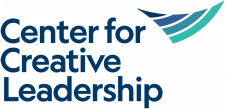- Managing people
Improving Employee Engagement
Despite better news, CCL suggests 4 areas in which companies can take steps to increase employee engagement
The most recent Gallop report on employee engagement in the U.S. showed a welcome upturn. 34% of workers surveyed said they were ‘engaged’ – involved in, enthusiastic about and committed to their work and workplace. This is the highest level since Gallup began reporting the national figure in 2000. What’s more, the percentage who are ‘actively disengaged’ – workers who have miserable work experiences – is now at its lowest level (13%), making the current ratio of engaged to actively disengaged employees 2.6-to-1 – the highest ever in Gallup tracking.
This is better news. But it this still means 66% of the workforce is either not engaged in their work or actively disengaged. A depressing position for individuals – who spend a large proportion of their waking lives at work – and a concern for any business wanting the succeed in a competitive environment, where performance and productivity are critical. Gallup's organizational research also reveals an amazing 70% variance in engagement scores among work teams – which Gallup attributes to the varied quality of team leaders.
In a recent commentary on the Gallop report, CCL suggests these 4 areas in which frontline leaders (and really, leaders at all levels of an organization) can take steps to increase employee engagement:
Manager Engagement: Engaged employees feel energized and connected to their boss. To increase manager engagement, frontline leaders can provide routine coaching, development, and feedback. Improving manager engagement builds trust and loyalty to one’s boss. Build trust on your team by delegating.
Job Engagement: Employees are more engaged when they are actively involved and dedicated to their job. Frontline leaders can increase job engagement by bringing in internal or external stakeholders who have directly benefited from the work their employees have done, and by not micromanaging. Increased job engagement is associated with better work performance. Work on increasing accountability.
Team Engagement: Employees are more engaged when they are motivated and excited by their coworkers. Frontline leaders can increase team engagement by providing direction, alignment, and commitment (DAC). Increasing team engagement enhances team effectiveness. Here’s how to make good leadership happen with DAC.
Organizational Engagement: Engaged employees are devoted to their organization and feel passionately about its mission. Frontline leaders can increase organizational engagement by advocating for training and development opportunities for their direct reports. Increased organizational engagement is associated with lower employee turnover and better customer satisfaction. This checklist gives managers 4 ways to develop their people.
Understanding the employee engagement dynamics across the 4 key areas highlighted by CCL can help target interventions to increase low-scoring engagement areas. For example, if employee engagement data shows workers have high engagement with their jobs, organization, and teams, but less so with their managers, interventions should be directed specifically toward increasing manager engagement.
Understanding and managing employee engagement is not easy because all employees have a free will and all are subject to many different influences. While ‘followers’ taking responsibility for their own engagement is also key, managing employee engagement is a leadership capability that can be developed, and one that is especially important for new leaders to master.
…………………………………………………………………………………………………………………….
Learn how CCL Fusion can help improve employee engagement in your organization. CCL Fusion is a solution that utilizes leading-edge predictive analytics to connect the dots between your leader competencies, team dynamics, your company culture, and strategic business outcomes.
A top-ranked, global provider of leadership development. By leveraging the power of leadership to drive results that matter most to clients, CCL transforms individual leaders, teams, organizations and society.
ARTICLES YOU MIGHT LIKE
BOOK REVIEW
UCL’s Colin Fisher explains how to understand the invisible forces of group dynamics to build and lead high-performing teams
DEVELOPING LEADERS QUARTERLY MAGAZINE AND WEEKLY BRIEFING EMAILS


































